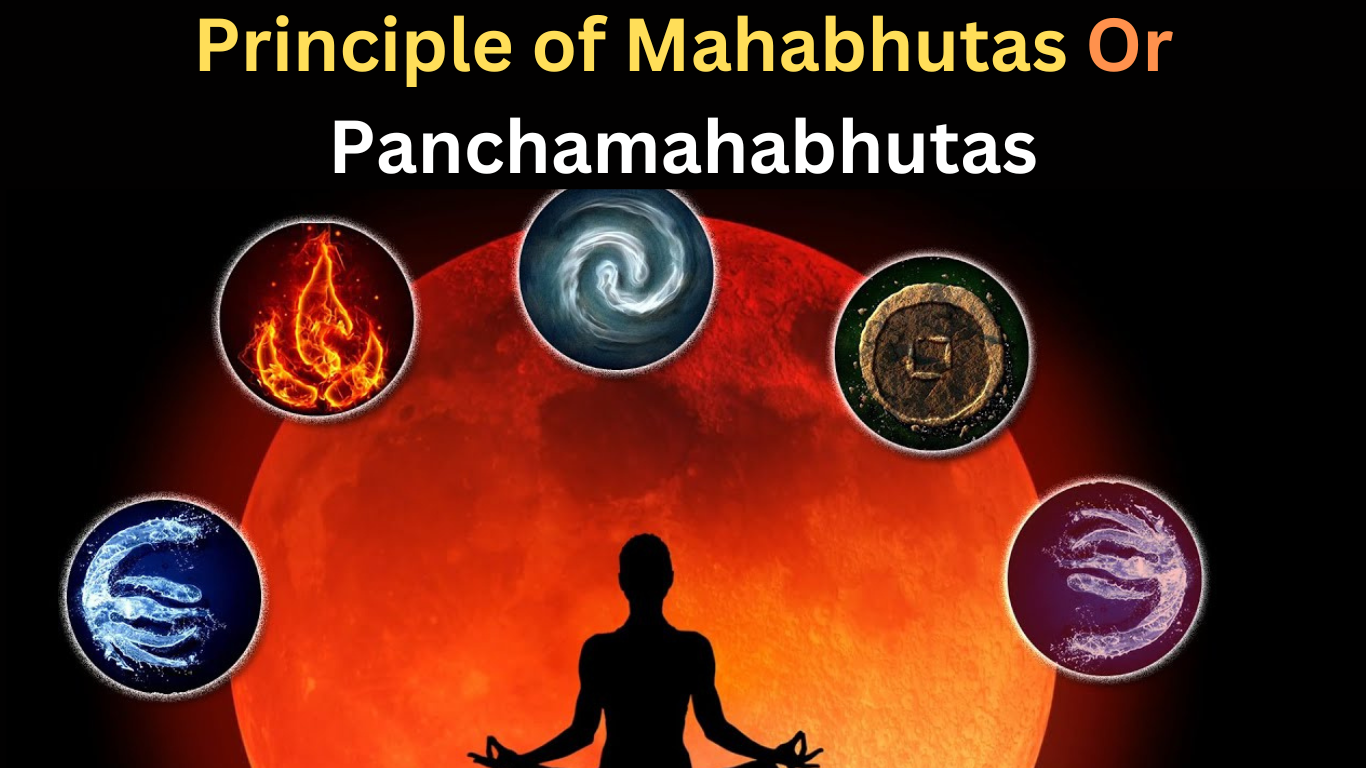Principle of Mahabhutas or Panchamahabhutas

Agni (Fire) Mahabhuta
Agni is the first mahabhutas and is basically fire. But its essence is understood from its Nirukta. With respect to simple grammar, the term agni in its dhatu would denote something that corrodes. According to Nirukta, the term agni has the following meanings: to shine, to burn, to move forward. This is in line with the artha of the dhatu of Agni. If we observe carefully, these characteristics are essentially what composes agni. The character of Agni is to corrode by burning; it is shining, and it moves forward by means of burning. If we talk about the pure adhyatmik aspect, agni is the first to receive ahuti and is the medium that propels the ahuti dravyas upwards; it shines like the sun and purifies the dravyas by burning them, thus removing or destroying all asuddhis.
Water (Jala) Mahabhuta
The term Jala means water, but its essence is understood by means of grammar. The term jala denotes something that veils and flows; it is essentially a flowing avarana. There exists another term for this mahabhuta, which is apa. The term अप् denotes something that flows. Water is the very essence of all flow; it is the very embodiment of the dimension of liquid and comprises the flowing potency of all liquids.
Earth (Prithvi) Mahabhutas
This mahabhuta has its own unique explanation. According to Sanskrit grammar, the dhatu here is prith, which denotes the action or quality of expansion and nourishment; the dhatu va denotes one who bears something; and the pratyaya of ई matra denotes feminine. The term prithvi thus means the feminine shakti, which has the character of being encompassing, holding, spreading forth, and nourishing. Earth is the one to have all three qualities, and she is pervaded by Bhu Devi or Prithvi.
Vayu (Air) Mahabhuta
This is mahabhuta, which is the essence of all wind, from the normal wind to the storms to the prana that flows inside the body. If we analyze the term vayu, it is composed of two dhatus, va and yu. The dhatu va is defined in shastras such as Shiv Rahasya Itihasa, Shiv Rahasya Upapuran, and even in Shankar Samhita of Skand Puran as the quality of moving and flowing but not as a liquid; this movement is more subtle than the flow of liquid and is best defined as how wind flows. The dhatu yu denotes the quality of joining or touching. We know that the quality or characteristic essence of vayu is to move and touch. This character is the essence of all types of vayus.
Sky (Akash) Mahabhutas
Akash is the most subtle of all mahabhutas; it is regarded as the first mahabhuta to be in existence. The term akash, if analyzed according to Sanskrit vyakaran, gives us the suffix आ, which denotes that the given quality is in negative, and the dhatu कश means that which is visible. As we know, Akash can’t be seen as such; it’s the absolute void of space that one sees in the name of seeing Akash. Another term for akash is vyom; the dhatu here is vyuha, which means to expand, and the pratyaya म denotes Guna; thus, vyom denotes the space with the ability of expansion.
Principle of Mahabhutas or Panchamahabhutas
Now coming to the aspect of the relation of the tanmatras with the mahabhutas.
Akasha, or vyom, is the one that is pervaded by sound, and sound alone is purely dhvani, or vibration, and only Shabda Tanmatra is present here.
The second mahabhuta here is the vayu (Air) Mahabhuta, which has both vibration and touch qualities. It is composed of two tanmatras, which are shabda and sparsh.
Jala (Water) Mahabhuta is liquid; it has the tanmatras shabda sparsha and rasa; it doesn’t have rup.
Agni (Fire) Mahabhuta has shabd, tvak, rasa, and rup.
Prithvi (Earth) is the last mahabhuta, where all the tanmatras are present, including gandha.